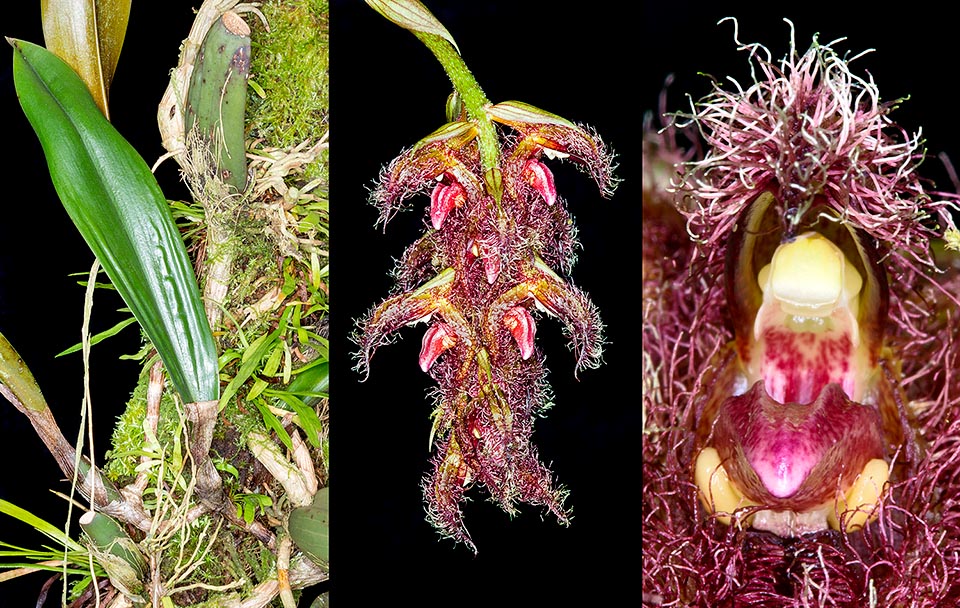Family : Orchidaceae

Text © Pietro Puccio

English translation by Mario Beltramini
The species is native to Borneo (Brunei and Sarawak) where it grows on the trees of the humid forests at low altitudes.
The name of the genus is the combination of the Greek substantives “βολβός” (bolbos) = bulb and “φύλλον” (phyllon) = leaf, with reference to the leaves growing at the apex of the pseudobulbs; the specific name is the Latin adjective “taeter” or “teter” = ugly, disgusting, with reference to the nauseating odour emitted by the flowers.
The Bulbophyllum taeter J.J.Verm. (1996) is an epiphytic species with ovoidal pseudobulbs laterally compressed, 4-7 cm long and 2-3 cm broad, spaced on a creeping rhizome rooting at the nodes and provided of one only obovate leaf with pointed apex, 30-38 cm long and about 7 cm broad, of intense green colour and glossy above. Floral scape 30-40 cm long ending in a drooping inflorescence, about 10 cm long, bearing 16-20 close flowers of pale purple colour with darker veins, subtended by ovate bracts with pointed greenish apex, with the sepals covered by thick twisted hairs of purple colour below, white at the apex; the flowers exhale an intense nauseating odour. Ovate dorsal sepal with pointed apex, concave, 1 cm long and 0,6 cm broad, united lateral sepals, of size similar to the dorsal sepal, elliptic petals, about 1 cm long and 0,2 cm broad, and ovate labellum with obtuse apex, about 0,8 cm long and 0,6 cm broad.

The Bulbophyllum taeter is a rare epiphytic species of Borneo with ovoidal 4-7 cm pseudobulbs, laterally compressed, and 30-38 cm leaf. Floral 30-40 cm scape with drooping 10 cm inflorescence and 16-20 close tiny flowers pale purple with darker veins, subtended by ovate bracts with pointed greenish apex. The sepals are covered by thick twisted hairs, purple below, white at the apex. The flowers exhale an intense nauseating odour. It reproduces by seed, in vitro, and by division © Giuseppe Mazza
Species rare in cultivation with characteristic inflorescence, but with very unpleasant odour, requires a partially shaded position, medium-high temperatures, 24-35 °C, high humidity, 75-85%, and air in constant movement. It is usually mounted on trunks, bark, rafts of cork or of arborescent ferns with sphagnum at the base to keep the humidity, with regular waterings and nebulizations utilizing rain water, demineralized or by reverse osmosis. Monthly fertilizations with a hydrosoluble balanced product, with microelements, at ¼ the dosage shown in the instructions. The transplants, when necessary, are to be done a the vegetative restart signalled by the emission of the new roots.
The species is reported in the appendix II of CITES (species whose trade is internationally ruled).
→ For general notions about ORCHIDACEAE please click here.
